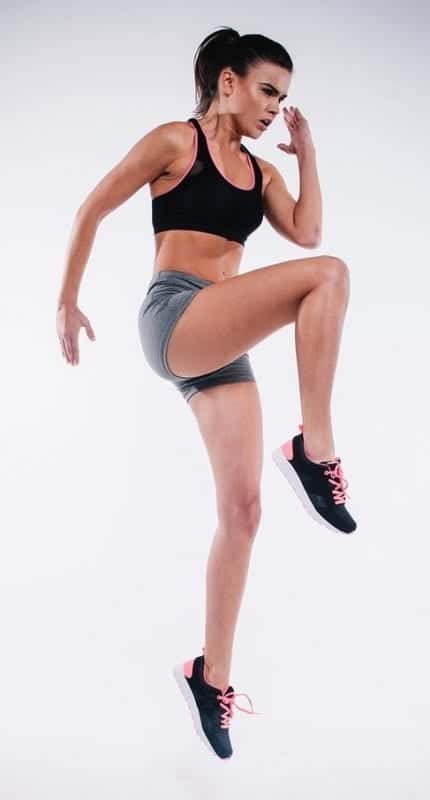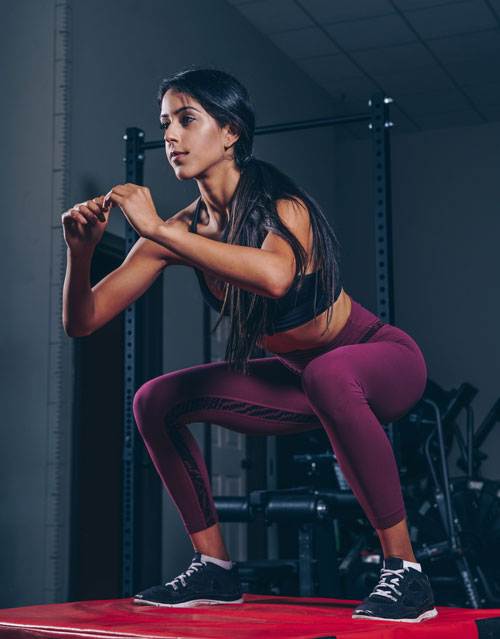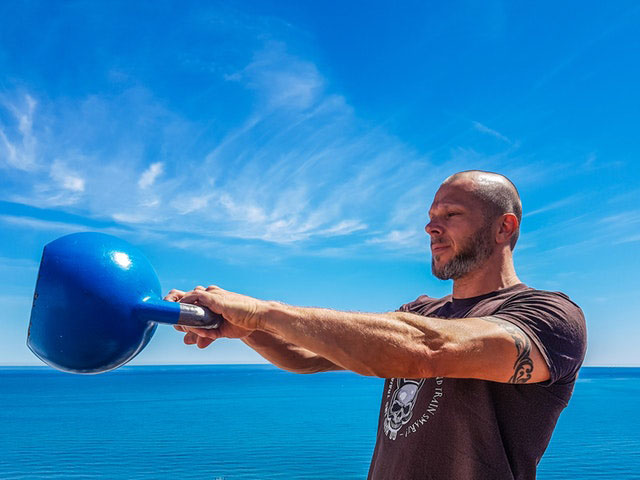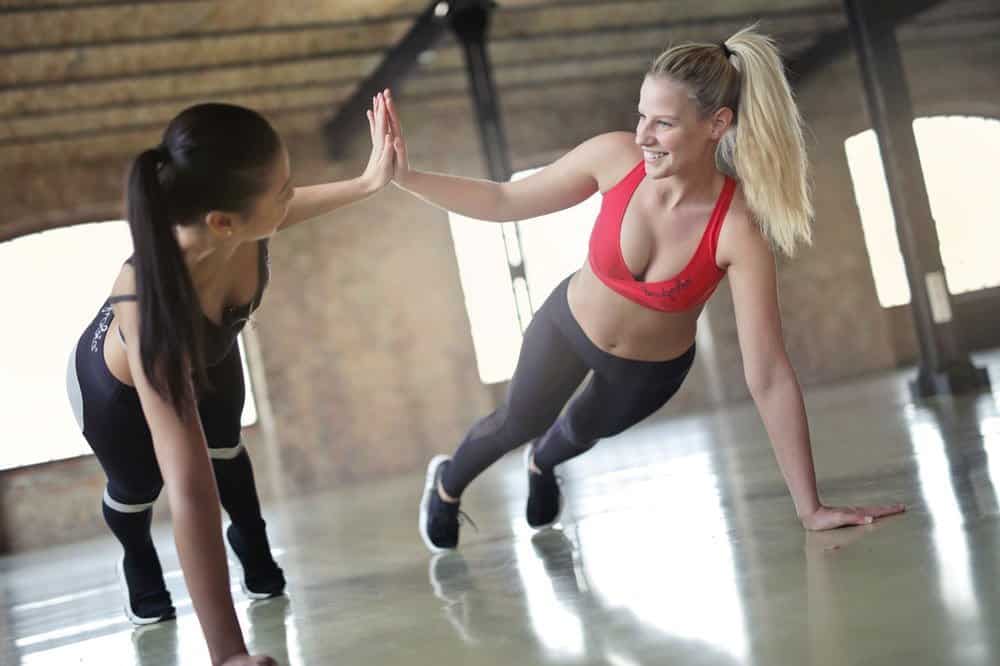The benefits of exercise is constantly been preached to us, but despite this, many people continue to live a sedentary lifestyle. In fact, it is believed around 30% of the world’s population don’t get enough exercise (Kohl HW 3rdet al., 2012).
This is a staggering amount considering the multitude of incredible mental and physical benefits it can have.
For some, time is the issue. Many of us lead are busy and life seems to get busier as we grow older. With more life and work commitments getting in the way, it can be hard to find the time to work out.
Even studies have found this to be true, such as one performed by Reichert, Barros, Domingues & Hallal (2007). They also found that 40% of participants considered lack of money as a barrier to physical activity.
What if I told you there is a way to work out that doesn’t require a gym membership or any equipment and is so time efficient that anyone can fit it into their day, no matter how busy?
Well, there is. Introducing HIIT.
What is HIIT?
HIIT which stands for ‘high-intensity interval training’, is exactly how it sounds. Repeated efforts of high-intensity exercise with rest periods in between intervals of exercise.
For example; running for 30 seconds, then taking 30 seconds rest and repeating for 10 intervals.
This method of training has really taken off in recent years, and it is easy to see why. Not only does it provide all the health benefits of steady state exercise but it arguably offers more, while taking less time.
Short on Time? Here are a few quick HIIT sessions you can perform right now!

Burpees & High Knees: Press start on your stopwatch and perform as many burpees are possible in 40 seconds. Rest for 20 seconds. At the one-minute mark perform as many high knees as you can in 40 seconds. Rest 20 seconds. Repeat. Perform until your stopwatch shows 10 minutes.

Air Squats & Planks / Sit-ups: Perform as many air squats as possible within a 60 second period. Rest 60 seconds. Hold a plank for 60 seconds. If you can’t hold a plank for 60 seconds, when you fail, switch to max sit-ups in the remaining time. Rest for 60 seconds. Repeat for 12 – 20 minutes.
For more HIIT workouts, as well as the benefits of HIIT and why it is particularly good for those 30 years old and up, continue reading below.
HIIT training for 30 – 40 years and up
As we age we become susceptible to life-threatening conditions such as cardiovascular disease and cancer. Fortunately, exercise is the ultimate preventative medicine and it’s free!
A meta-analysis performed by Nocon et al., (2008) examined the association of physical activity with all-cause and cardiovascular mortality. A total of 883,372 participants were included in 33 studies, spanning a 4 to 20-year period. Physical activity reduced the risk of cardiovascular mortality by 35% and all-cause mortality by 33%.
When transitioning into your 30s, 40s and beyond, your focus should be firmly on your health and longevity. A major factor relating directly to our health is our weight and unfortunately, as we age our metabolism slows.
In fact, it is believed to fall about 1 to 2 percent per decade. This may not seem like a great deal, but over several years, the pounds can creep on.
To avoid gaining pounds on the scale this means two things, consuming less and/or exercising more. This is where HIIT enters the picture.
Not only is it a time-efficient and effective way to work out, but it also is thought to boost your metabolism for a certain period of time even after you finish your workout. This is known as post-exercise oxygen consumption {EPOC} or the ‘afterburn’ effect which we will explore later.
Read more indepth-analysis of EPOC here.
As you can see, the use of HIIT can be an incredibly effect training method to quick start your journey to a healthier and happier you. I promise once you give it a try, you’ll be hooked!
How can HIIT benefit me?
Heart Health: There’s no point in heaving huge bulging arms if you are out of breath when you climb the stairs. Looking after our hearts is perhaps the most important thing we can do health wise. Unfortunately, because we can’t see it in the mirror it tends to be neglected.
However, the heart is just like any other muscle in that it should be trained. HIIT is arguably the most effective method for training the heart due to its ability to reduce blood pressure and resting heart rate (Batacan et al., 2016).

Time Efficient: One of the biggest benefits of HIIT is how it offers a large training effect in minimal time. HIIT workouts are ideal for those with busy lifestyles looking to get in some intense exercise. As little as 10 minutes can give you a lung-busting workout that not only leaves you gasping for air but incredibly satisfied.
Exciting: We have all slogged away for what seems like an eternity on the Schwinn bike or treadmill, just waiting for the clock to hit a certain number so we can climb off and call it a day.
HIIT adds a level of excitement into your workout by making you push hard for a short burst, followed by a rest. During each interval you can aim for a certain distance, number of reps or calories burned to keep it interesting and rewarding.
However, with HIIT, the calories don’t stop burning when you stop as multiple studies that have shown HIIT to create the aforementioned ‘afterburn’ or EPOC effect, known in the science world as post-exercise oxygen consumption.
This is the process your body goes through to restore itself to a normal state. Research, such as that by LaForgia, Withers, and Gore (2006) has shown more intense exercise to produce a larger ‘afterburn’ effect due to higher intensity exercise using more oxygen.
Boosts Metabolic Rate & Burn Calories: Research has found high-intensity interval training to burn more calories during the same time period than other types of training. Falcone et al. (2015) found HIIT to burn a staggering 25-30% more calories!
Creating Your own personalized HIIT Workouts
Time to sack the trainer, you don’t need one.
The beauty of HIIT is that there is a never-ending combination of workouts at your fingertips. This helps keep exercise interesting, which ultimately increases the likelihood you maintain it as a habit.
The easiest introduction into high-intensity interval training is to take an exercise you are already familiar with and implement timed intervals and rest periods.
For example, if you are used to going to the gym and spending 30 minutes on the spin bike, try 1 minute of cycling with 2 minutes of rest between efforts for 10 sets.
Once you begin to get comfortable performing high-intensity efforts, you can begin to experiment with various exercises and interval lengths, and with almost endless exercises to choose from, you’ll never run out of new and exciting workouts, and you don’t need to exercise in your own personal home gym neither.
As with any form of exercise, the best way to start is to begin slow and build. This allows us to build our work capacity and gradually handle a higher training volume while reducing the risk of injury and overtraining. Let’s take a look at a three-stage guideline that you can follow to take your fitness to the next level.
Beginner: So, you’re brand new to the world of HIIT. To get started let’s try some simple routines that follow short intervals with longer rest periods. Keep the exercise selection to simple movements and focus on all-out effort during the 20 or 30-second interval. Here are a few examples;
- 20 seconds on, 40 seconds rest x 10
- 30 seconds on, 60 seconds rest x 8
- 30 seconds on, 30 seconds rest x 15
- 60 seconds on, 60 seconds rest x 15
- 3 – 5 minutes on, 3 minutes rest x 5 (One of my personal favorites).
- 40 seconds work, 20 seconds rest
(Exercises to try – jump squats, butt kicks, mountain climbers)
Intermediate: Now you have a taste for HIIT, it’s time to up the difficulty. Here are a few 1 to 1 ratio exercise to rest guidelines you can try for yourself
(Exercises to try – kettlebell swings, push-ups, running)

Advanced: At this point, you have gradually built your work capacity over a number of weeks or months and are looking for the next challenge. Remember, our bodies adapt to the training stimulus we put it through so we must regularly give it a new stimulus, this can be as simple as increasing the number of working sets or altering our work and rest durations. E.G;
(Exercises to try – spin bike, rowing machine & dumbbell movements)
Two to three HIIT sessions per week alongside some a few weight training sessions and a steady state session is a perfect mix that’ll fast track you towards your fitness goals in no time.
And remember, get creative with your exercise selection, it doesn’t have to be the same old treadmill or spin bike every time. Experiment with resistance training movements such as a dumbbell press, row, squat or lunge or try some more advanced bodyweight movements such as handstand push-ups / holds, or L-sits.

